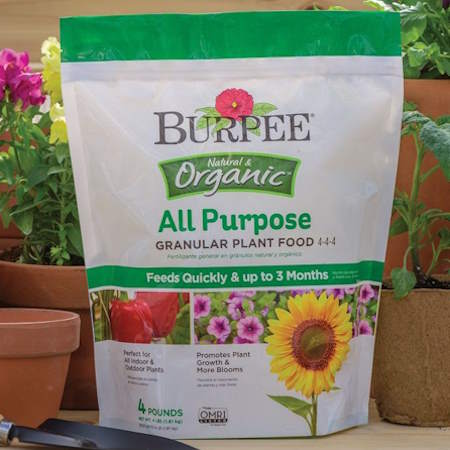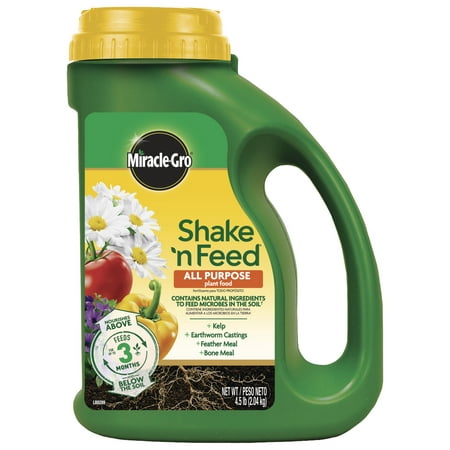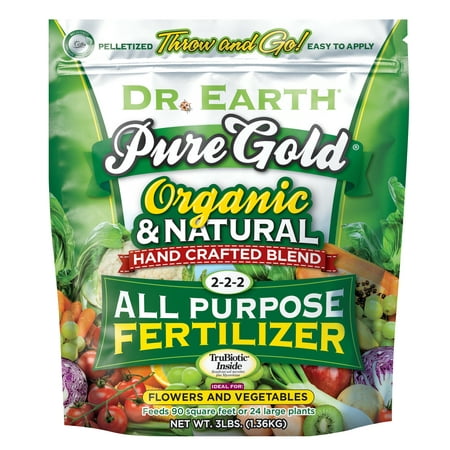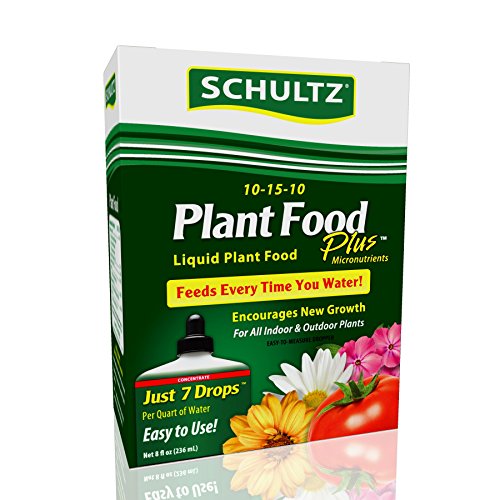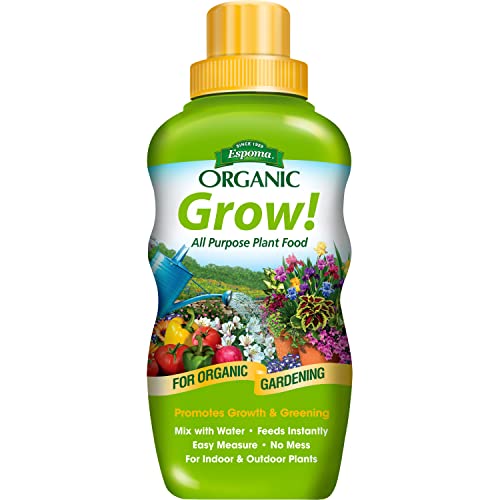What is the best fertilizer for flowers in pots? Expert tips for the best display from plants in containers
See how and when to use fertilizer on flowering plants in pots for glorious blooms

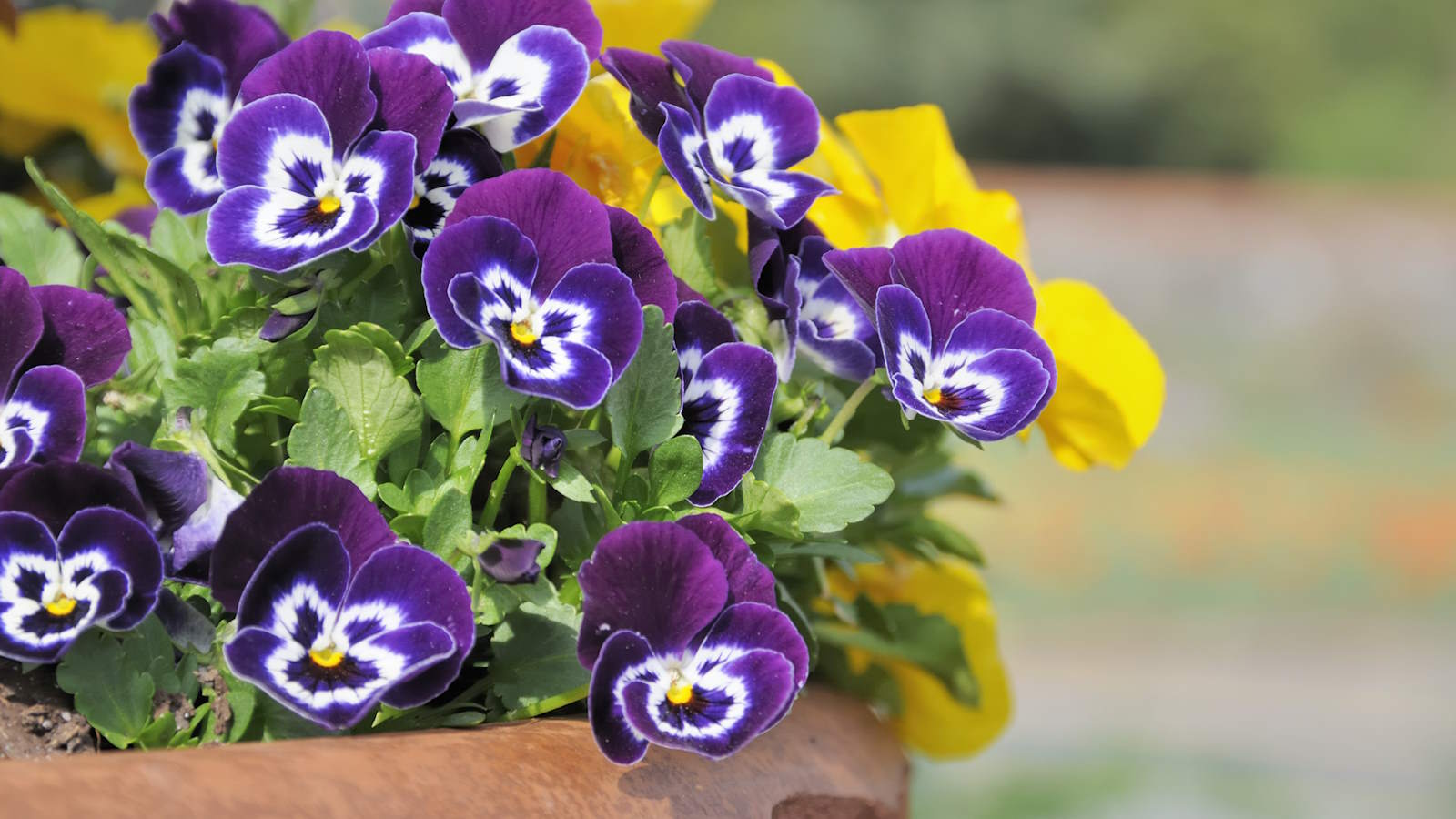
Flowering plants growing in pots can bring bright color to any smaller or urban space, livening up a deck, yard, or balcony with glorious flowers, texture, and scent. It is important to fertilize flowers growing in containers to get the best display of blooms.
As flowering plants growing in containers can use all the goodness available in the soil, and nutrients can also leach out, using fertilizers for flowers throughout the season gives plants a beneficial dose of nutrients to keep them healthy and performing.
To help you know how and when to feed flowers in pots, containers, window boxes, and hanging baskets, we hear from some experts to discover the best fertilizer for flowering plants in pots.
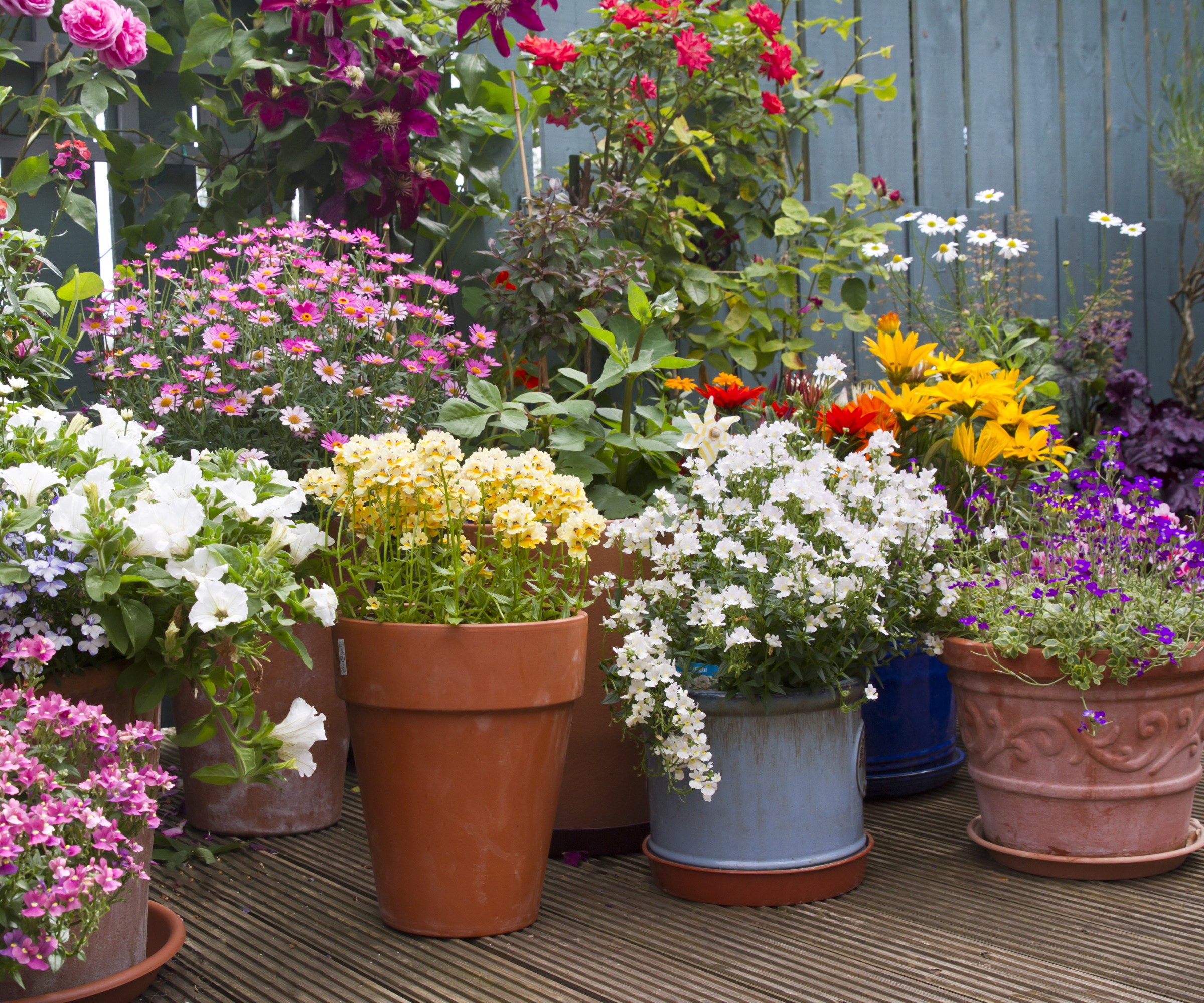
Flowers in containers bring color to decks
The different types of plant food for flowers in pots
Fertilizer for flowering plants in pots can be either granular or liquid. An ideal feeding regime for plants in container gardens should include using both types, at different times and for specific reasons. So let’s see what a good regime may look like, including when to fertilize and the best types of products to use.
When to use fertilizer for flowering plants in pots
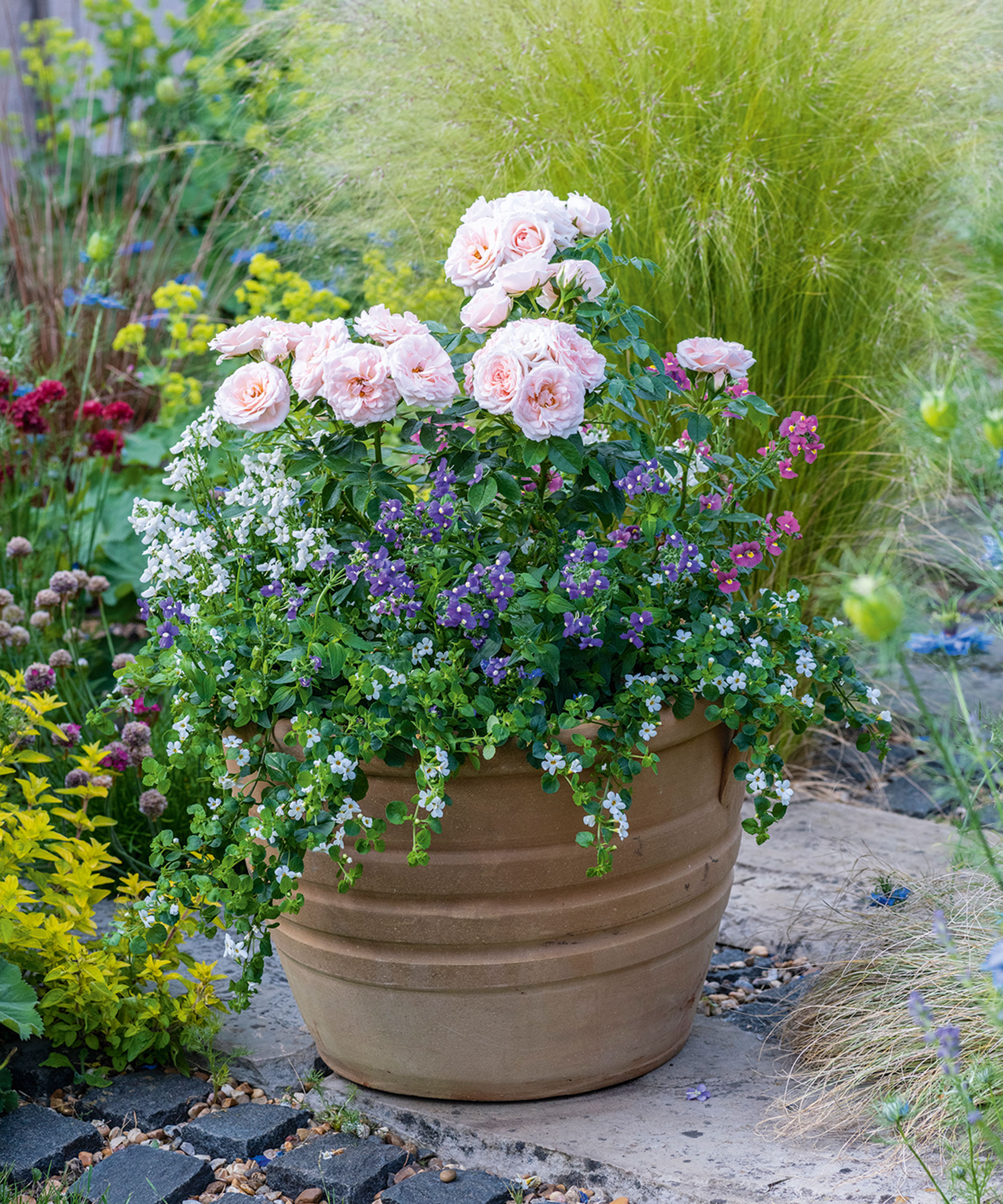
Fertilizing flowers in pots give you long and beautiful displays
Whether you are growing annual or perennial flowers as part of a container garden, or planting some flowers in pots to dot around your backyard for extra color, there are some important times to feed them.
Any plants growing in pots can quickly use up all the nutrients in the soil - and nutrients will also leach out through watering throughout the season - so regular topping up provides plants with the goodness they need to thrive. This will give them all the nutrients required to grow and put on a great display of flowers.
The first time to fertilize is at the time of planting. This is the same whether they are shop-bought plants or you are transplanting seedlings you grew, as annual flowers are fast-growing flowers to grow from seed yourself.
Design expertise in your inbox – from inspiring decorating ideas and beautiful celebrity homes to practical gardening advice and shopping round-ups.
Amy Enfield, senior horticulturist at ScottsMiracle-Gro, says: ‘Since flower roots cannot explore outside the soil in the container, incorporating slow-release fertilizers at the time of planting is a good way to make sure there is a steady supply of nutrients for your flowers.’
Feeding at planting time gets the plants off to a great start to life in their new container home and can provide all the nutrients for the first 4-6 weeks, before you will need to start a regular feeding schedule.
Once the plants start coming into bud and forming flowers, they then benefit from regular feed throughout the flowering season.
Rosebie Morton, founder of The Real Flower Company, recommends a feed with a liquid fertilizer every two weeks to provide regular and fast-acting nutrients to help plants thrive during their flowering months. This feeding should take place throughout spring and summer.

Amy has over 25 years of experience in the Lawn & Garden industry and has been with ScottsMiracle-Gro for 11 years. She has a BS and MS in Horticulture from Michigan State University and a PhD in Plant & Environmental Sciences from Clemson University.
How to pick a fertilizer for flowering plants in pots

Fertilizer for flowers in pots can be granular or liquid
It is important to understand plant fertilizer numbers on packaging to help you pick the best feed. All products will display the makeup of nitrogen, phosphorus, and potassium as a ratio of three numbers. For example, balanced feeds will display a 5-5-5 or 10-10-10 ratio.
As well as understanding the nutrients in the products, only ever add feed at the recommended rate. You can over-fertilize plants and this leads to stressed and unhealthy plants that are more susceptible to pests and diseases.
A fertilizer to add to the potting soil when planting flowers in containers wants to be balanced and slow-release to feed plants for several months. These feeds tend to be granular products to be mixed into the potting soil and can be organic or synthetic.
Examples of organic fertilizers include homemade compost, bone meal, or chicken manure pellets that will break down slowly in the soil. Synthetic, or inorganic, fertilizers are commonly seen on store shelves and online. These are concentrated feeds with higher nutrient levels than organic fertilizers - and include products sold as all-purpose plant food.
Perennial flowers growing in pots will benefit from slow-release fertilizers being added each following spring and mixed into the potting compost.
Shop balanced plant food for flowers in pots
Once the flowers start to bud, the switch should be made to liquid fertilizers. These products are dissolved in water and applied when you water plants.
Liquid fertilizers are fast-acting and provide plants with an instant boost of nutrients, though that does mean they need regular applications little and often throughout the growing season.
Nadezhda Yaneva, gardening and plant expert at Fantastic Gardeners, recommends: ‘For flowers in pots, the recommendation is to use a water-soluble, balanced fertiliser with a slightly higher phosphorus content (the middle number in the N-P-K ratio), which would be beneficial for potted flowers.
‘Look for a ratio such as 10-15-10, which promotes strong root growth and abundant blooms.’
You can use synthetic liquid fertilizers designed for use on flowering plants, or make a plant fertilizer such as a homemade comfrey fertilizer.
Shop liquid plant food for flowers in pots
Perennial flowering plants benefit from being regularly re-potted and replanted to keep them productive and healthy.
Rosebie Morton says that if it is ‘not practical’ to replant them annually, then mulching with organic matter or replacing ‘the top few centimetres of compost with fresh compost’ and adding some slow-release fertilizer is a good way to keep them happy and blooming for another year.

Rosebie Morton is the founder of The Real Flower Company. She first started growing garden roses in the walled garden at her family farm in 1995. The Real Flower Company was founded in 1999 and specializes in English grown scented roses and flowers.
FAQs
Can I use tomato feed on flowering plants in pots?
A liquid feed designed for growing tomatoes can be beneficial for flowers. Such products feature all the essential plant nutrients but are particularly high in potassium - a vital nutrient for producing flowers. Dilute the feed according to the manufacturer’s recommendations and apply it to the soil every 2-3 weeks during the growing season.
When you plant up containers, always use good-quality potting soil. That is always the best soil for container gardening and mixing in some slow-release fertilizer adds extra valuable nutrients. Do not be tempted to use garden soil in pots as it is not ideal for containers and will sit too wet, increasing the risk of unhappy plants and root rot.

Drew has worked as a writer since 2008 and was also a professional gardener for many years. As a trained horticulturist, he worked in prestigious historic gardens, including Hanbury Hall and the world-famous Hidcote Manor Garden. He also spent time as a specialist kitchen gardener at Soho Farmhouse and Netherby Hall, where he grew vegetables, fruit, herbs, and cut flowers for restaurants. Drew has written for numerous print and online publications and is an allotment holder and garden blogger. He is shortlisted for the Digital Gardening Writer of the Year at the 2025 Garden Media Guild Awards.
